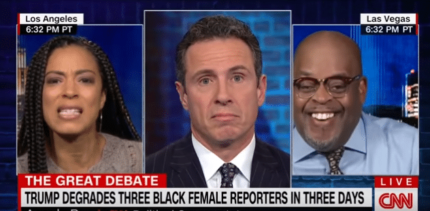
Attorney General Jeff Session’s policy would cut or withhold certain police grants from cities who refuse to comply with immigration policies. Photo by REUTERS/Jonathan Ernst.
There’s a new sheriff in town at the U.S. Justice Department, with newly installed Attorney General Jeff Sessions intent on sending a strong message to those charged with drug offenses. In March, we examined the possibility of Sessions opening a second war on drugs, in which those with low-level drug and marijuana offenses would be prosecuted with zeal.
The writing was on the wall as early as February, when White House secretary Sean Spicer revealed to a reporter, “I do believe you’ll see greater enforcement. There’s a big difference between the medical use and recreational use, which is something the Department of Justice will further be looking into.”
Now, they’re doing just that. Sessions laid out new instructions for prosecutors trying federal drug cases during a press conference on Friday, saying, “Charging and sentencing recommendations are bedrock responsibilities of any prosecutor and I trust our prosecutors in the field to make good judgement. They deserve to be un-handcuffed and not micromanaged from Washington.”
Issued via a two-page statement, Sessions has created new sentencing guidelines that will allow federal prosecutors to pursue drug offenses to the furthest extent of the law. Previously, former Attorney General Eric Holder had tried to curb rising prison populations by unveiling his “Smart on Crime” initiative, which had allowed prosecutors to use their own discretion when pursuing nonviolent offenses.
“We must ensure that our most severe mandatory minimum penalties are reserved for serious, high-level or violent drug traffickers,” wrote Holder in 2013.
According to these guidelines, Sessions advises that “It is a core principle that prosecutors should charge and pursue the most serious, readily provable offense. By definition, the most serious offenses are those that carry the most substantial guidelines sentence, including mandatory minimum sentences.”
Perceived as a return to the Reagan-era “tough-on-crime” rhetoric, critics argue the sweeping new guidelines will push the booming prison population even higher. In a written statement, the ACLU expressed its own disappointment with the guidelines, writing “Jeff Sessions is pushing federal prosecutors to reverse progress and repeat a failed experiment — the War on Drugs — that has devastated the lives and rights of millions of Americans, ripping apart families and communities and setting millions, particularly Black people and other people of color, on a vicious cycle of incarceration.”
Nixon introduced the failed “War on Drugs” over four decades ago, but the effects have lasted far longer than his presidency did. Thanks to the Anti-Drug Abuse Act of 1986, those caught in possession of crack cocaine, usually minorities, received harsher sentences than those found with the powder form of the drug.
Addressing the disparities in sentencing between drug offenses, in 2010, former U.S. representative Dan Lungren described the situation as “Certainly, one of the sad ironies in this entire episode is that a bill, which was characterized by some as a response to the crack epidemic in African American communities, has led to racial sentencing disparities which simply cannot be ignored in any reasoned discussion on this issue.”
The Fair Sentencing Act of 2010 took the first steps to address the issue, diminishing the gap between how crack and powder cocaine cases were sentenced. But, despite using drugs at roughly the same rate, Black and white offenders continue to be held to different standards.
Crime is down in America — according to the NYPD, New York alone has seen a 85 percent drop in murders since 1990 — but the number of those serving excessively long sentences continues to rise, thanks in part to legislation designed to do just that. Even amid historically low crime rates, a record 206,268 people are serving life or virtual life sentences — one of every seven people in prison.
In a May 2017 study from The Sentencing Project, Ashley Nellis, Ph.D. revealed that “the United States incarcerates people for life at a rate of 50 per 100,000, roughly equivalent to the entire incarceration rates of the Scandinavian nations of Denmark, Finland and Sweden.”
Out of those incarcerated, nearly half are African-American, a disturbing statistic that the study lists as “Equal to one in five Black prisoners overall.”
Addressing the need for change, the study adds, “Absent from most mainstream criminal justice discussions is a reconsideration of long prison sentences. Evaluation of the appropriateness of lifelong prison sentences is typically either omitted from policy discussion or deliberately excluded from reforms.”
Other research from the Sentencing Project — including a 2013 study — revealed that “Racial minorities are more likely than white Americans to be arrested. Once arrested, they are more likely to be convicted; and once convicted, they are more likely to face stiff sentences.”
It’s a discussion unlikely to gain much traction under a Sessions-led Justice Department. Instead, the Attorney General — the same man who once insisted that “good people don’t smoke marijuana” — has doubled down on his beliefs, recently stating, “We know that drugs and crime go hand in hand. They just do. The facts prove that’s so.”
In the crosshairs are the Black and brown bodies most likely to be funneled into waiting jail cells, a 2014 ACLU study finding that “In particular, there are staggering racial disparities in life-without-parole sentencing for nonviolent offenses.”
When it comes to drug offenses, they also found that “There are significant racial disparities in sentencing decisions in the United States. Sentences imposed on Black males in the federal system are nearly 20 percent longer than those imposed on white males convicted of similar crimes.”
With officials more interested in reaching prison quotas than true reform, it’s a situation unlikely to see a resolution anytime soon, with critics fearing that more citizens will be herded into the justice system.
Voicing disappointment in the new guidelines, Inimai M. Chettiar, director of New York University’s Brennan Center Justice Program, explained “The Trump administration is returning to archaic and deeply flawed policies. Sessions is leaving little to no room for prosecutors to use their judgement and determine what criminal charges best fit the crime.”
She added, “That approach is what led to this mess of mass incarceration. It exploded the prison population, didn’t help public safety and cost taxpayers billions in enforcement and incarceration costs.”


